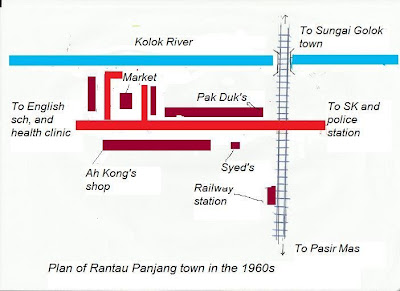How to make bird sculpture with wire and white cement
By Wan Chwee Seng
A bird sculpture can be used to complement your plantings and landscape and even provide a focal point for your garden.
Here are a few simple steps on how you can make your own bird sculpture.
I have chosen the White-breasted Waterhen or ruak-ruak for my sculpture, as it is a frequent visitor to our garden and relatively easy to make because of its small size. It is helpful to look at the pictures of the bird you have chosen for your sculpture and to refer to the picture occasionally when sculpting the bird.
 |
| 'White-breasted Waterhen' foraging for food at the edge of a man-made pond |
Things you'll require
1. PVC or Vinyl covered clothes line
2. White cement
3. Welded wire mesh/ thick plastic netting
4. Flower wire or thin wire
5. Plastic eyes
6. Acrylic paint
Instructions
1. From a coil of PVC or Vinyl covered clothes line cut 6 pieces of wire (about 1 foot or 30.48 cm in length)
2. Take 4 pieces of the wire and arrange them together. Allow one piece to project slightly, as this will be used to make the bird's beak.
3. Tie the clothes line wire securely with thin flower wire or any thin wire at three points along the length of the clothes line wire, as shown below.
(i) 3 cm and 12 cm from one end of the wire
(ii) 5 cm from the other end of the wire
4. Bend the wire to form the neck and body of the bird.
5. Gently, pull the middle part of the wires slightly upwards and downwards to form the body.
6. Bend the other end of the wires to form the tail.
7.For the legs, take the other two pieces of clothes line wire and bend one end of the wire ( about 4 cm from the tip). Tie the bent end to each side of the lower portion of the wire frame. If the wire is soft, then tie two pieces of wire together to form each leg.
8. Instead of two straight legs, bend the wire at the right position and angle to depict the movement of the bird. Bend the other loose ends and tie them securely to the wire mesh which will form the base for the sculpture
9. Fill the body cavity with old newspaper. ( The newspaper will help to lighten the body weight of the bird). Use thin flower wire to wrap around the body frame. Make sure the body is slightly flat as it will later be filled and covered with white cement. For the bird's head attach a small piece of newspaper and wrap around it with flower wire. The beak, neck and legs too must be tightly wound with flower wire to allow the white cement to hold together.
10. Place the wire mesh with the bird on it, in the cover of a shoe box or any shallow container.
11. Get a plastic container eg. ice-cream box and pour some white cement into the container. Slowly, add water to the white cement and stir it until you get the right mixture that can be poured smoothly into the box. Make sure the wet cement cover the wire mesh completely. Leave the cement to dry.
Optional: To make the base resemble the bark of a tree, let the white cement to dry partially and then use a plastic fork to score it.
 |
| A bark-like base |
12. When the base has dried completely, remove it from the box and place it preferably on a turntable (revolving tray). A turntable is useful, as you can work on your sculpture from one position without having to move round the table.
13. Pour white cement into a small container. Slowly add water, until you get the right consistency.
14. Scoop out the wet cement with a small plastic spoon and slowly cover the whole wire frame. Sometimes you have to wait for a few minutes to let the cement take hold before continuing. At this stage do not worry unduly about the shape of the bird. When the wire framework is completely covered leave it to dry.
15. With a plastic knife/ ice-cream stick or suitable carving tool add the wet white cement and slowly sculpt it into the shape of a bird. Sculpt the wings when the cement is partially dry.
16. Shape the head of the bird and when the cement is partially dry, press in the plastic eyes and use a bit of cement to cover the edge of the plastic.
17. When the sculpture is completely dry you can smoothen it with sandpaper and paint the sculpture with acrylic paint, if required.
Below: Close-up view of White-breasted Waterhen sculptures.









































